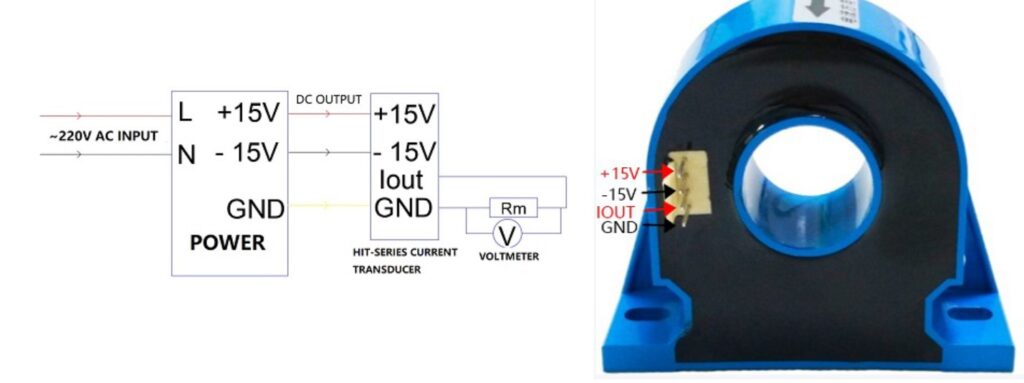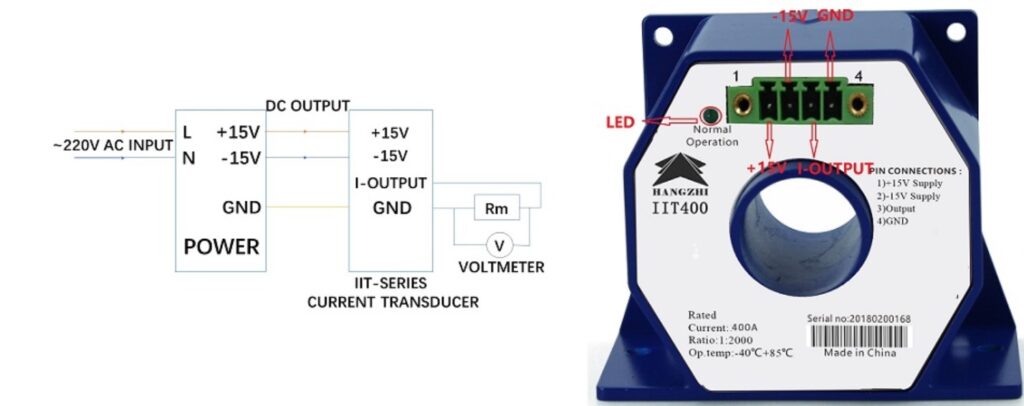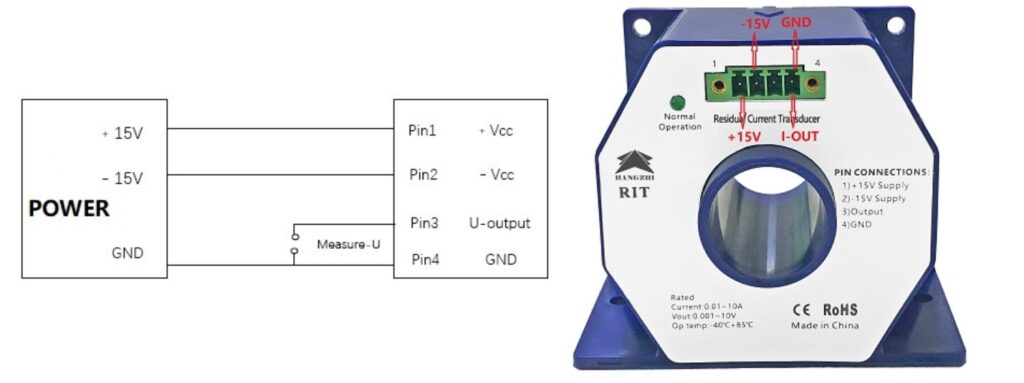1. How to use AIT high precision fluxgate current transducers
Hangzhi high precision current transducer / sensor products were developed on the basis of Multi-Point Zero Flux Gate technology, which can be applied for both AC and DC current measurement application, with analogical current, digital signal via RS232/485 & 0-10V voltage output options available. All Hangzhi high precision current transducer / sensor products are CE EMC & RoHS compliant.

Important Note:
The resistance connected to the output terminal of the sensor should be within the range specified in the datasheet.
(a) When the sensor does not pass current, the voltage on the resistor R is about 0V
(b) When the device is working normally after power on, the green indicator light is always on
(c) When the sensor passes a DC current, the voltage on the resistor R is:
U = Measured Current / Sensor Turns Ratio * Resistance R
If the output voltage is abnormal:
(a) First use a multimeter to measure the power supply of the sensor and check whether the power supply is wired correctly;
(b) Check whether the running indicator and the power supply indicator are displayed normally.
2. How to use HIT hall-effect replacement and IIT industrial fluxgate current transducers
2.1 How to wire HIT & IIT current transducer
The wiring method of the HIT and IIT current transducer is almost the same, please find the details below:
However, there is no operation indicate LED on HIT current transducers.


(2) Test method:
The resistance connected to the output terminal of the sensor should be within the range specified in the datasheet.
When the wiring is correct and working normally:
(a) When the sensor does not pass current, the voltage on the resistor Rm is about 0V;
(b) When the sensor passes a DC current, the voltage on the resistor Rm is:
U = Measured Current / Sensor Turns Ratio * Resistance Rm
3. How to use RIT leakage current transducers

3.2 How to measure with RIT leakage current transducer
(2) Test method:
The output terminal of the sensor is connected to the voltage meter or analogical input module
When the wiring is correct and working normally:
(a) When the primary current is 0A, the output voltage of the sensor is about 0V;
(b) After the device is powered on, when the device is working normally, the green indicator light is always on;
(c) When the sensor passes DC current, the primary current Ip is:
Ip=Kn*Uoutput
If the current is abnormal or the power supply is abnormal:
(a) First use a multimeter to measure the power supply of the sensor and check whether the power supply is wired correctly;
